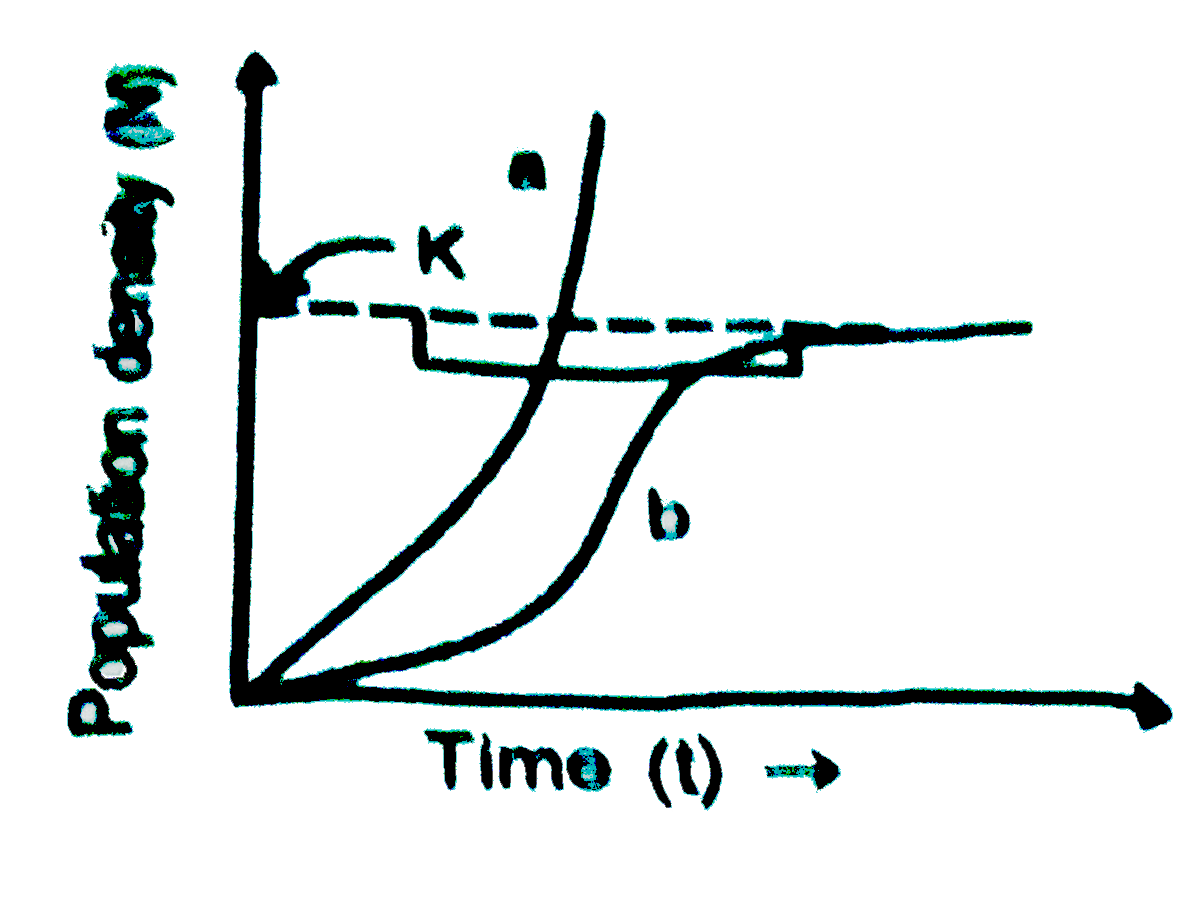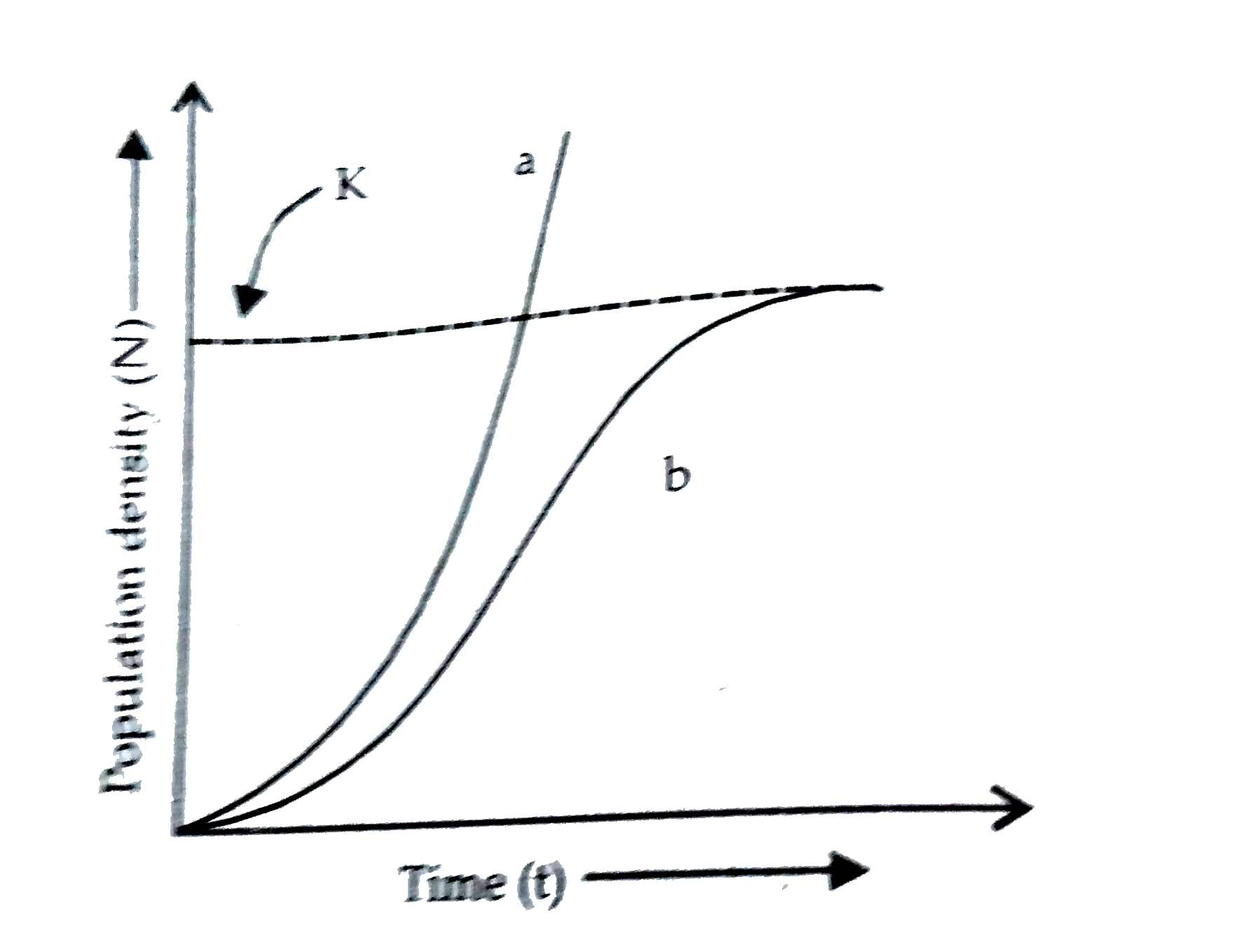dNdt=rN(1−NK) What does the following notations represent ?
(i) dN/ dt (ii) r (iii) N (iv) K
(i) Rate of change in population size (ii) Intrinsic rate of natural increase (iii) Population size (iv) Carrying capacity
Topper's Solved these Questions
- BOOK - ICSECHAPTER - ORGANISMS AND POPULATIONSEXERCISE - PRACTICE QUESTIONS ( SHORT ANSWER TYPE -II QUESTIONS)18videos
ORGANISMS AND POPULATIONS
- BOOK - ICSECHAPTER - ORGANISMS AND POPULATIONSEXERCISE - PRACTICE QUESTIONS (LONG ANSWER TYPE QUESTIONS)18videos
ORGANISMS AND POPULATIONS
- BOOK - ICSECHAPTER - ORGANISMS AND POPULATIONSEXERCISE - PRACTICE QUESTIONS ( VERY SHORT ANSWER TYPE QUESTIONS)18videos
ORGANISMS AND POPULATIONS
- BOOK - ICSECHAPTER - MOLECULAR BASIS OF INHERITANCEEXERCISE - MCQ (Source Based Questions)23videos
MOLECULAR BASIS OF INHERITANCE
- BOOK - ICSECHAPTER - PRINCIPLES OF INHERITANCE AND VARIATIONEXERCISE - MULTIPLE CHOICE QUESTION98videos
PRINCIPLES OF INHERITANCE AND VARIATION
Similar Questions
How many electrons are unpaired in
(i) He ? (ii) C?
(iii) N? (iv) K?View SolutionStudy the graph given below and answer the questions that follow :
(i) The curve 'b' is described by the following equation :
dNdt=rN{K−NK}
(ii) What does 'K' stand for in this equation ? Mention its significance.
(ii) Which one of the two curves is considered a more realistic one for most of the animal populations ?
(iii) Which curve would depict the population of a species of deer if there are no predators in the habitat ? Why is to so ?
 View Solution
View Solution
Knowledge Check
- Question 1 - Select One
The population growth is generally described by the following equation : dNdt=rN(K−NK) What does 'r' represent in the given equation ?
APopulation density at time 't'BIntrinsic rate of natural increaseCCarrying capacityDThe base of natural logarithm
Write each of the following in expanded notation: (i) 3057 (ii) 12345 (iii) 10205 (iv) 235060
View SolutionIf X={1,2,3}, if n represents any member of X, write the following sets containing all numbers represented by
(i) 4n , (ii) n+6 , (iii) n2 , (iv) n−1View SolutionWhat is 'r' in the population equation given : dN/dt = rN
View SolutionExpress each of the following numbers using exponential notation:(i) 512 (ii) 343 (iii) 729 (iv) 3125
View SolutionWhat does 'K' represent in the equation given below?
dNdt=rN(K−NK)View SolutionStudy the population growth curves in the graph given below and answer the questions which follow :
(i) Identify the growth curves ‘a’ and ‘b’.

(ii) Which one. of them is considered a more realistic one and why ?
If dN9dt)=rN(K−NK) is the equation of the logistic growth curve, what does K stand for ?
(iv) What is symbolised by N ?View SolutionThe population growth is generally described by the following equation : dNdt=rN(K−NK) What does 'r' represent in the given equation ?
View Solution

